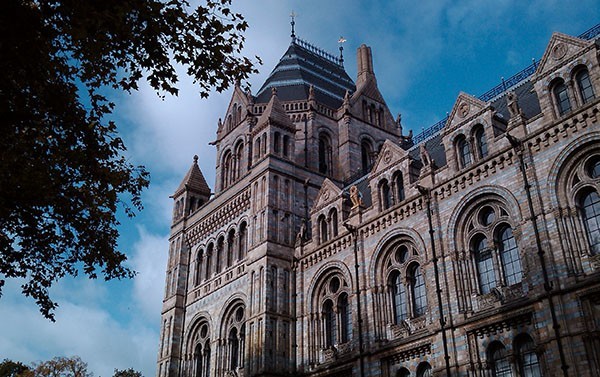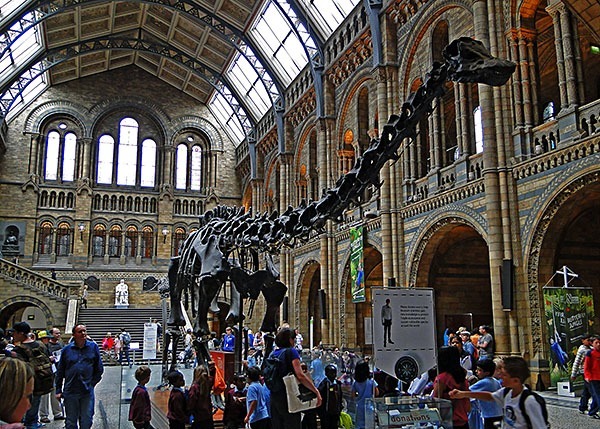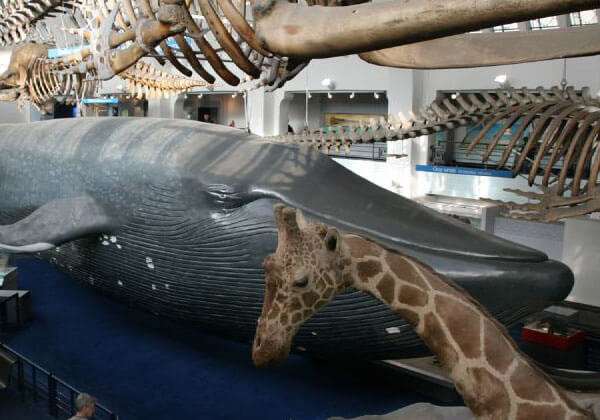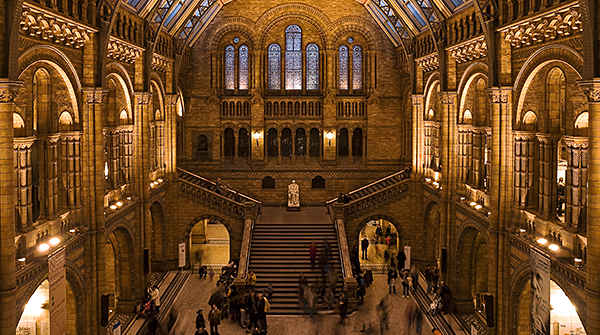
One of the best ways for us as humans to understand who we are, and why we are the way we are it's to examine our history and the history of the world around us. Since opening its doors in 1881, the Natural History Museum London has made it its aim to help visitors improve their comprehension of the planet’s natural history, and how that affects the present. It has done this through its many exhibits, and galleries. If you are planning a trip to London this year, why not include a visit to this museum to your itinerary. If you do you will be able to enjoy some of the following things:
Dippy

This is the pet name that has affectionately been given to the 105-foot (32 m) long replica Diplodocus carnegii skeleton that has been given a home in the center hall of this museum. This replica is a copy of the original skeleton that is housed at the Carnegie Museum. This replica was built with permission of King Edward VII, and was first debuted in May 1905.
The side-by-side skeleton, and model of the blue whale

Weighing in at over 10 tons, and having a length of 25 m, this model was a feat of engineering for its time. And even now decades later people from around the world are impressed by its size. The workers who designed this model actually did their work inside the body of the real whale. According to rumors they built a trap door in the belly of the whale, which they use for cigarette breaks. However before they sealed this trap door forever they left what has been described as a time capsule with coins and other artifacts from the day inside the belly of the whale.
Galleries

The Natural History Museum London is full of galleries that are designed to represent the changing history of our planet. These galleries are separated into individual colors such as the blue zone, which include things like creepy crawlers, minerals, power plants, and primates.
The entire museum is set up in a way that is designed to capture the attention of the individuals who visit it. The goal of the museum curators is to make natural history come to life. The museum is a beautiful place to take your children so that they can learn a little bit more about our planet. Don't be surprised if you also walk out of this museum learning a thing or two about the sphere that we live on and its history.
Natural History Museum address and hours
Natural History Museum
Cromwell Road
London
SW7 5BD
Monday to Sunday: 10.00 - 17.50. The Museum is open every day except 24-26 December. Last admission is at 17.30. Admission is free.
Photos by Taraji Blue (1), fmpgoh (2), Capt' Gorgeous (3), and weesam2010 (4) on flickr
You should follow me on twitter here.
